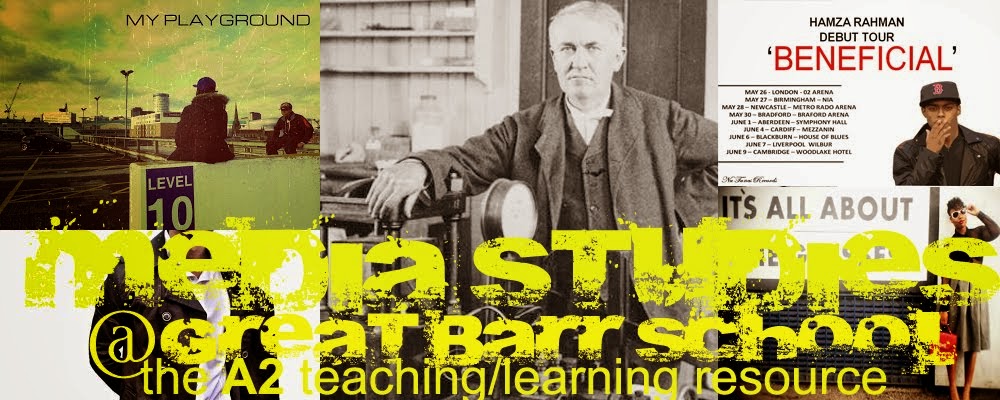This lesson we're going to explore some of the issues that come under the 'wider contexts' umbrella. These ideas are focusing on contemporary media debates and the impact of media activity on the world around us. in simple terms, where the theory meets the reality.
And it gets messy.
So, by approaching some of the issues and seeing how media theory might be applied, we can both understand the deeper complexities and make some interesting connections.
This lesson it's the future of TV. Not just the usual techno-babble, but how two recent events that made it into the media headlines might indicate where TV is headed in the next 10 years.
First, let's consider the Oreo Lickers scandal and get some sense of why it was not only considered such a serious breach of media practice but also a breach of ASA rules and even the civil law of this country.
First, let's look at the YouTube video behind all the fuss.
The Dan and Phil video featured on their YouTube channel - a channel with over 2.5 million subscribers. The issue was that the advert was required to inform audience that it was a paid for spot; it was made by the boys because they were being paid by Oreos to do so. The aim of the spot was to promote the brand identity of the product [and increase sales of Oreos].
Whilst there is nothing wrong with a high-profile channel or celebrity using their audience power to market a product [and make money for themselves] it is required that they should make this clear to audiences. Very clear. To not do so is to deceive audiences who might view the brand or product differently if they were aware that money was exchanged for the positive exposure. This was felt to be a particular problem/issue given that the majority of the audience for the Dan and Phil channel is young people, specifically children [and thus seen as very vulnerable to media manipulation].
The second point might be what it tells us about the changing patterns of media consumption.
The Dan and Phil channel attracts many more youth viewers than BBC or ITV youth output. This means that not only do they have a bigger reach than Children's BBC but that they are much more desirable to advertisers eager to gain access their [potentially] lucrative audience.
The following article [extracted from media guardian at link below] shows that this is of great significance because it reflects a growing change in patterns of media consumption that is generational and one that is moving at an ever faster pace. This changes the whole idea of media platforms and media access. the following is of huge significance to SECTION B IMPACT OF DIGITAL TECHNOLOGY and also to how we must approach SECTION A.
This research found that there were widespread differences between HOW
children and adults watched TV not just in WHAT they watched.
Tweens and teens watch just half the amount of live TV as adults each
day, and choose to “top-up” viewing by watching clips on services such as
YouTube, Vimeo and Vine, according to new research by the UK media regulator.
Ofcom
says children aged 11 to 15 watch about 1hr and 32min of live TV per day,
compared with the average adult’s 2hr 58min of viewing.
Instead,
older children are supplementing their TV viewing by turning to sites such as
YouTube, Vimeo and Vine, as well as watching clips posted on Facebook or
Twitter and news websites.
11
to 15-year-olds are watching an average of 33 minutes per day of short online
video clips.
This
accounts for about a fifth of total daily viewing - which includes live or
recorded TV programming, on-demand or streamed TV and DVDs - of just under
three hours.
The
report highlights a clear generational digital viewing divide, with adults
watching a daily average of just 5 minutes of online video – a sixth that
of children – accounting for just 2% of total daily viewing.
Adults watch an average total of 4hr and 17min of video content a day. This is dominated by
live TV, which accounts for 70% of that time (2hr 58min).
Almost
a quarter (22%) of 11 to 15-year-olds said some weeks they did not watch any
live TV.
Ofcom’s
research also finds that the digital age gap extends to the use of mobile
phones, with children more likely to use social media and instant messaging
services such as Facebook, WhatsApp and Viber than to make a phonecall.
Just
25% of 11 to 15-year-olds said that they talk on the phone at least once a
week, compared to 83% of adults.
Children
prefer texts, instant messaging and photo messaging, which takes up 56% of the
time spent on their phones, communicating with friends and family.
Older children also spend twice as long on social networking sites each
day as adults - 52min compared to 25min.
Email
has also dropped out of fashion, with digitally connected 11 to 15-year-olds
five times more likely to use instant messaging than email each week.
The
rise of digital music services such as Spotify, Deezer and Apple’s iTunes is
also proving a challenge to the live radio industry. More than 50% of the
average 11 to 15-year-old’s weekly listening time is spent on digital music,
either streamed or stored on a device.
While
40% of 11 to 15-year-olds admit they tune in to a radio station at least
once a week, they are spending just 15min doing so each day on average. This
compares with the 75% of adults who tune in to live radio each week,
listening for an average of 1hr 19min per day.
Ofcom
also said older children are taking greater control over what they listen to
compared to adults. Almost a fifth of tweens and teens stream music each
week, compared to 13% of adults. Almost 45% listen to their own digital music
(33% of adults), and they are twice as likely to watch music videos (22% to 11%
for adults).
Older children spend just a fifth of their weekly listening time on live
radio, while this takes up 71% of the average adult’s weekly listening habits.


